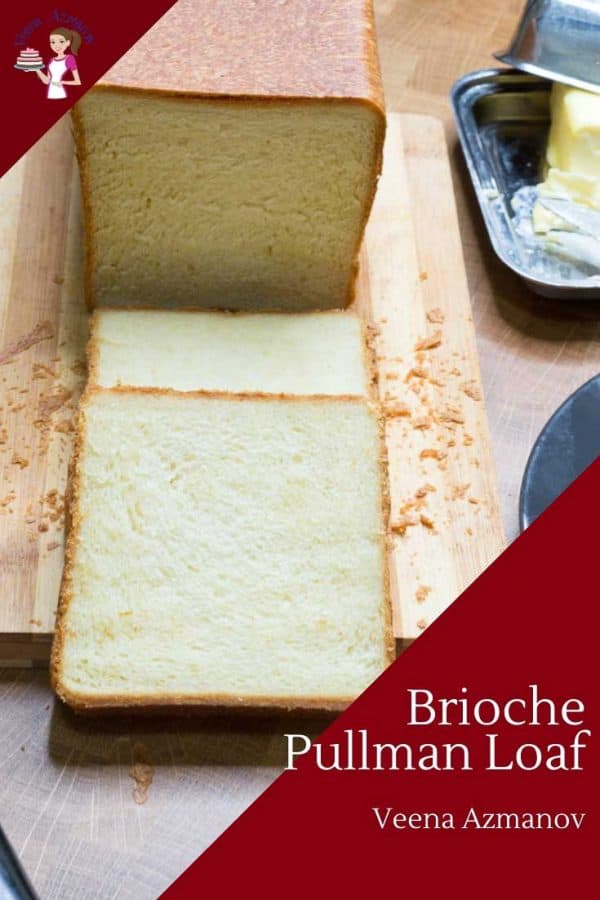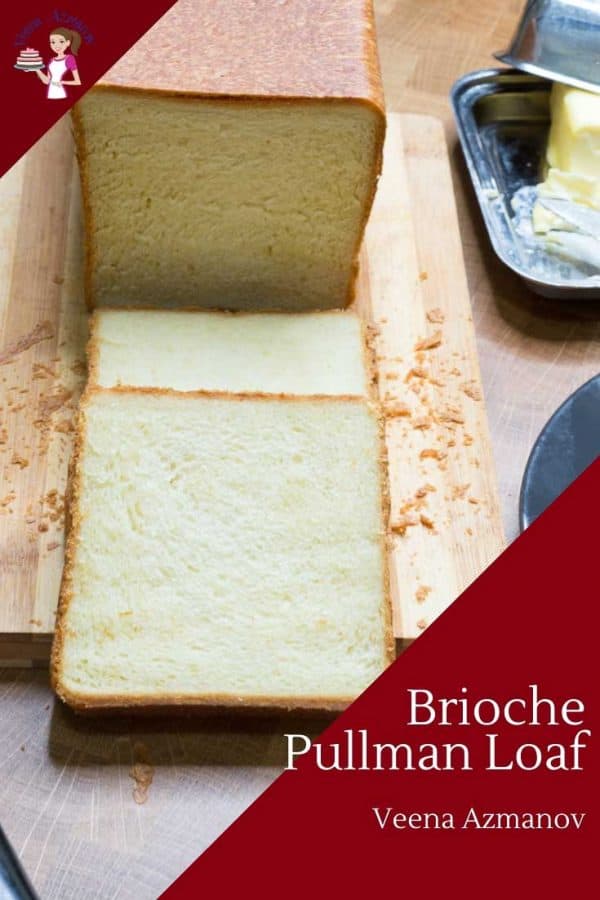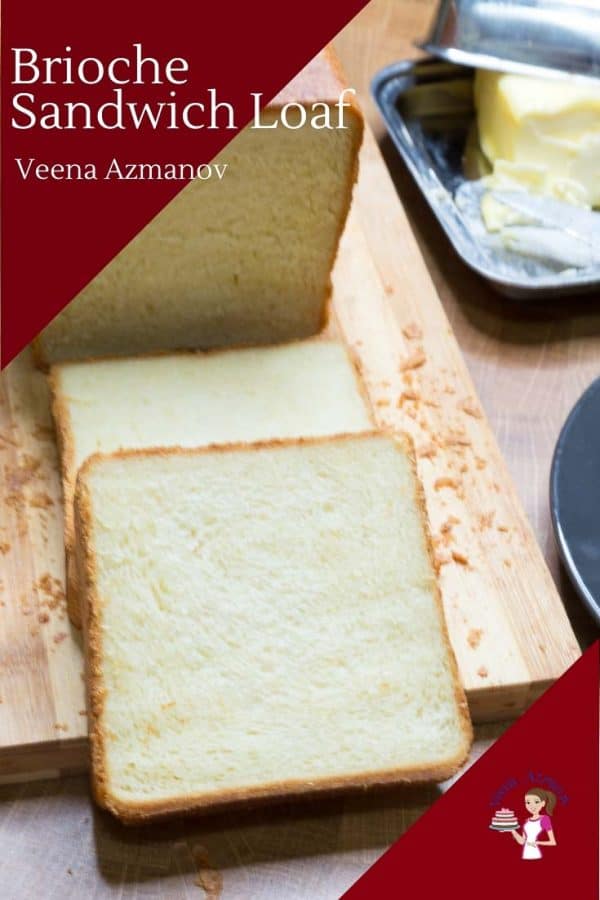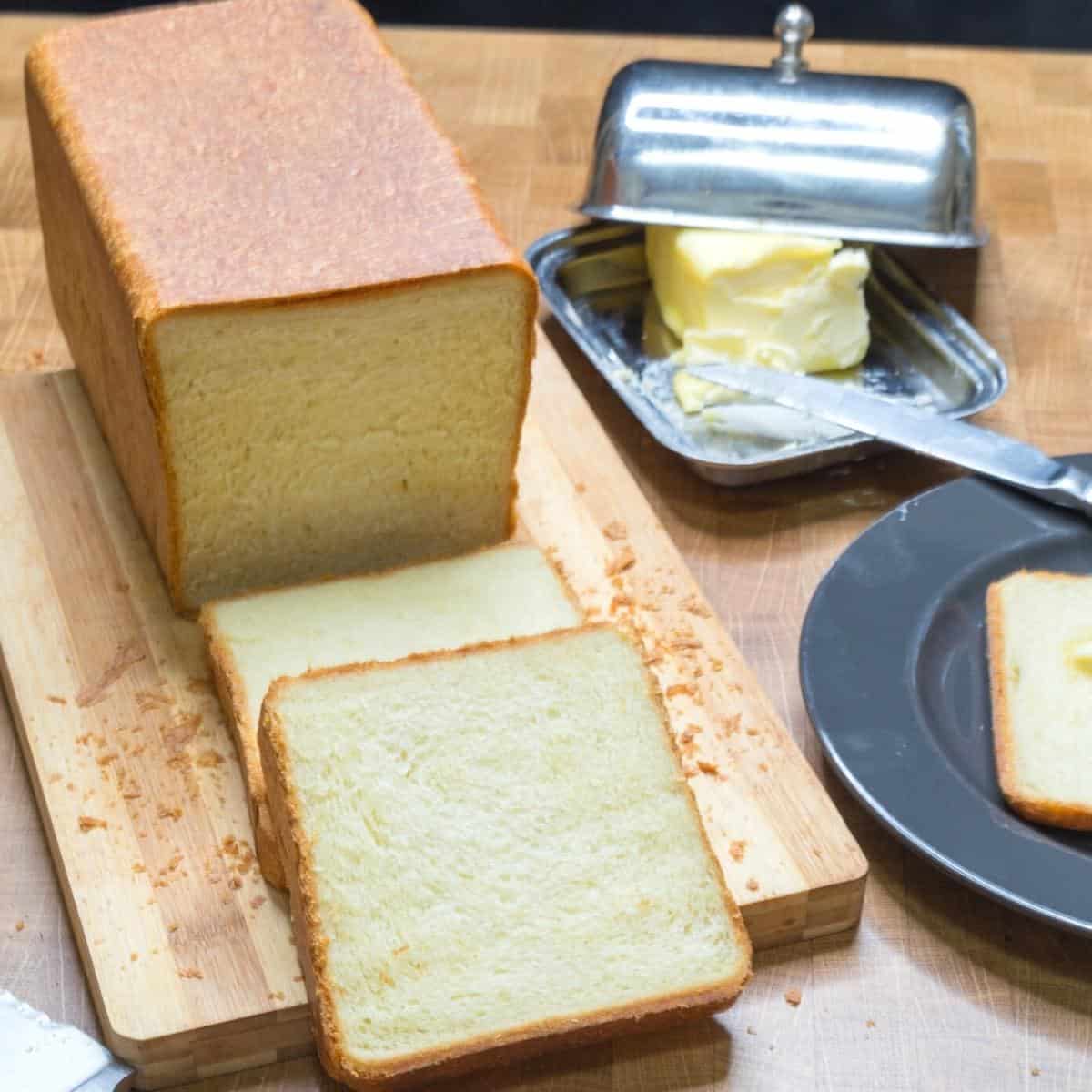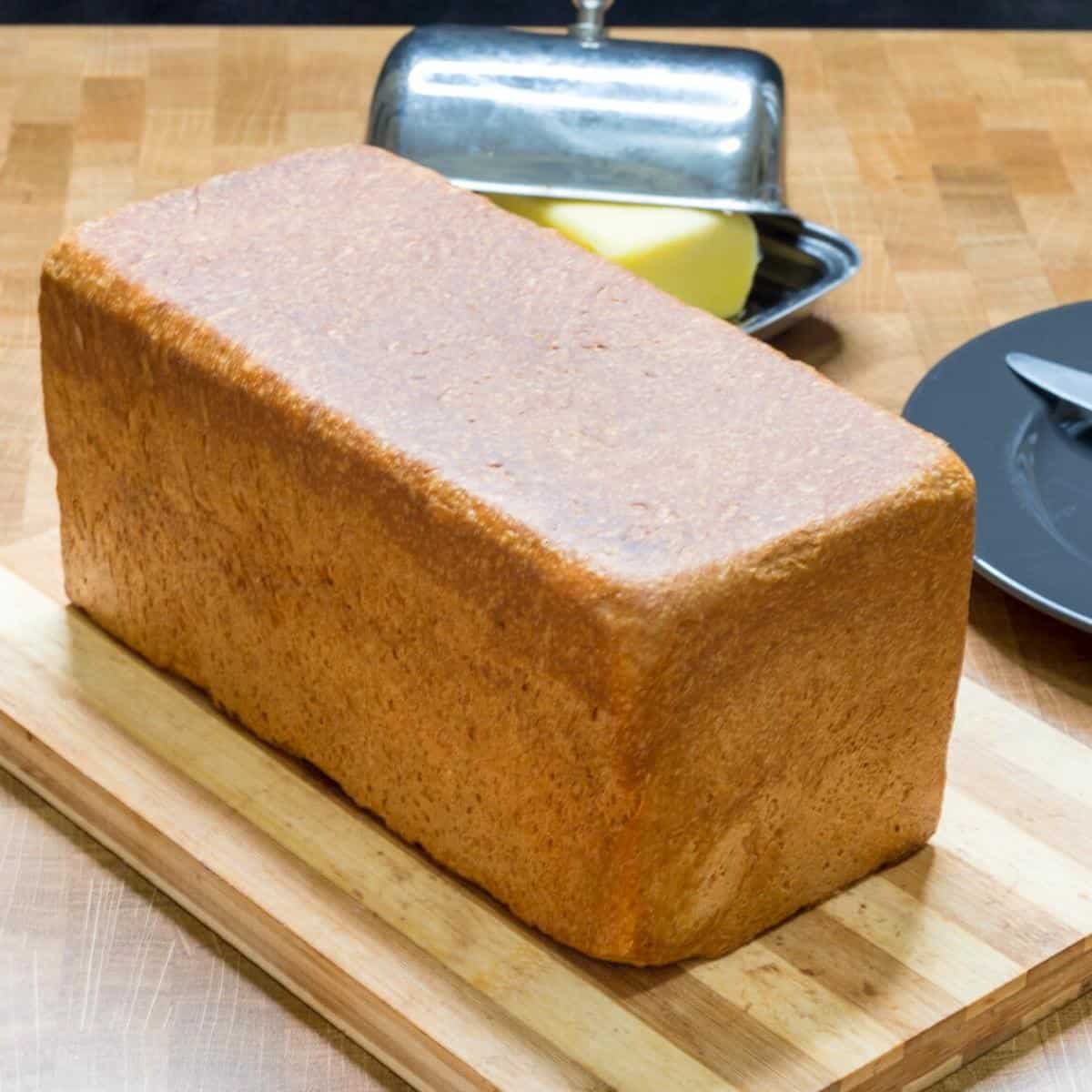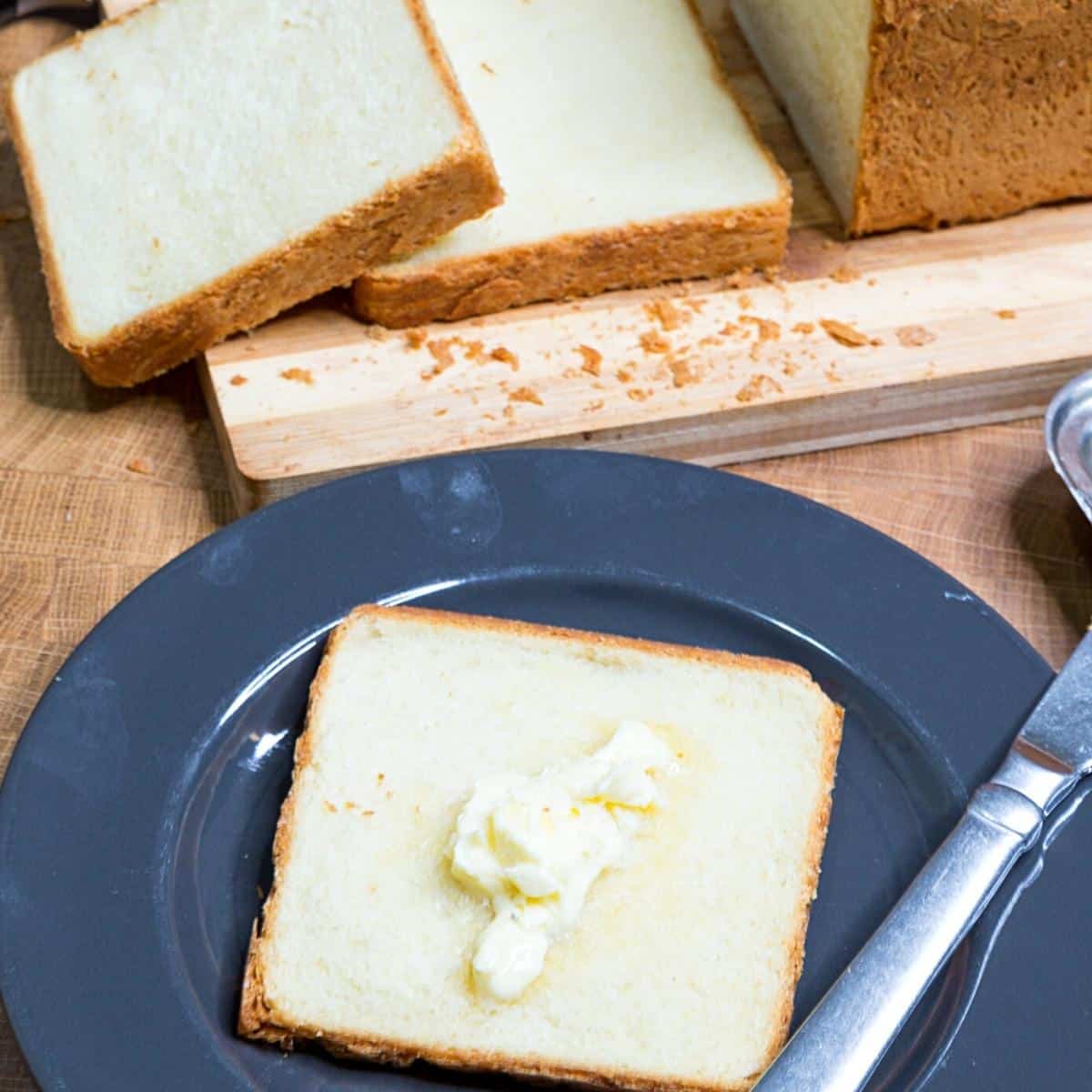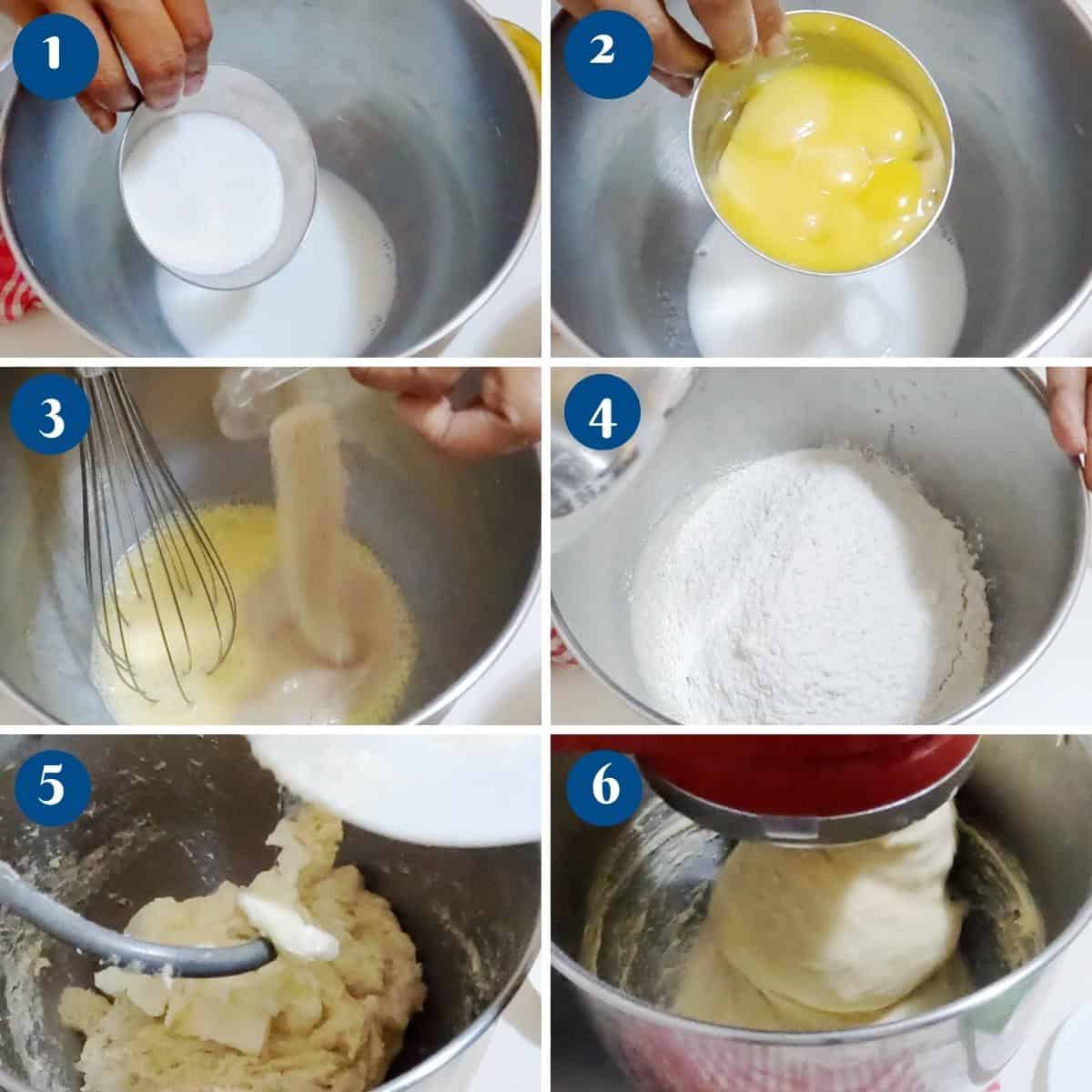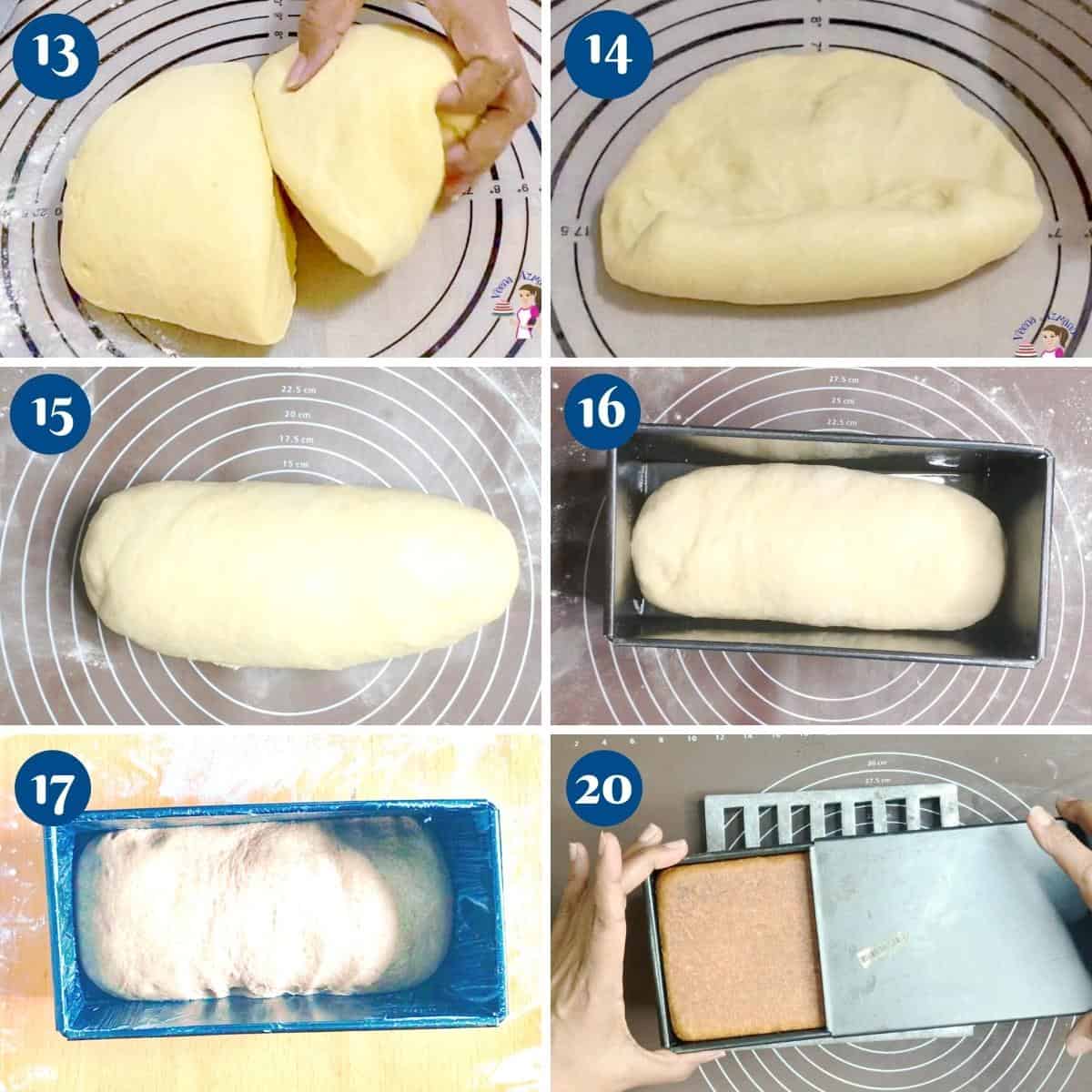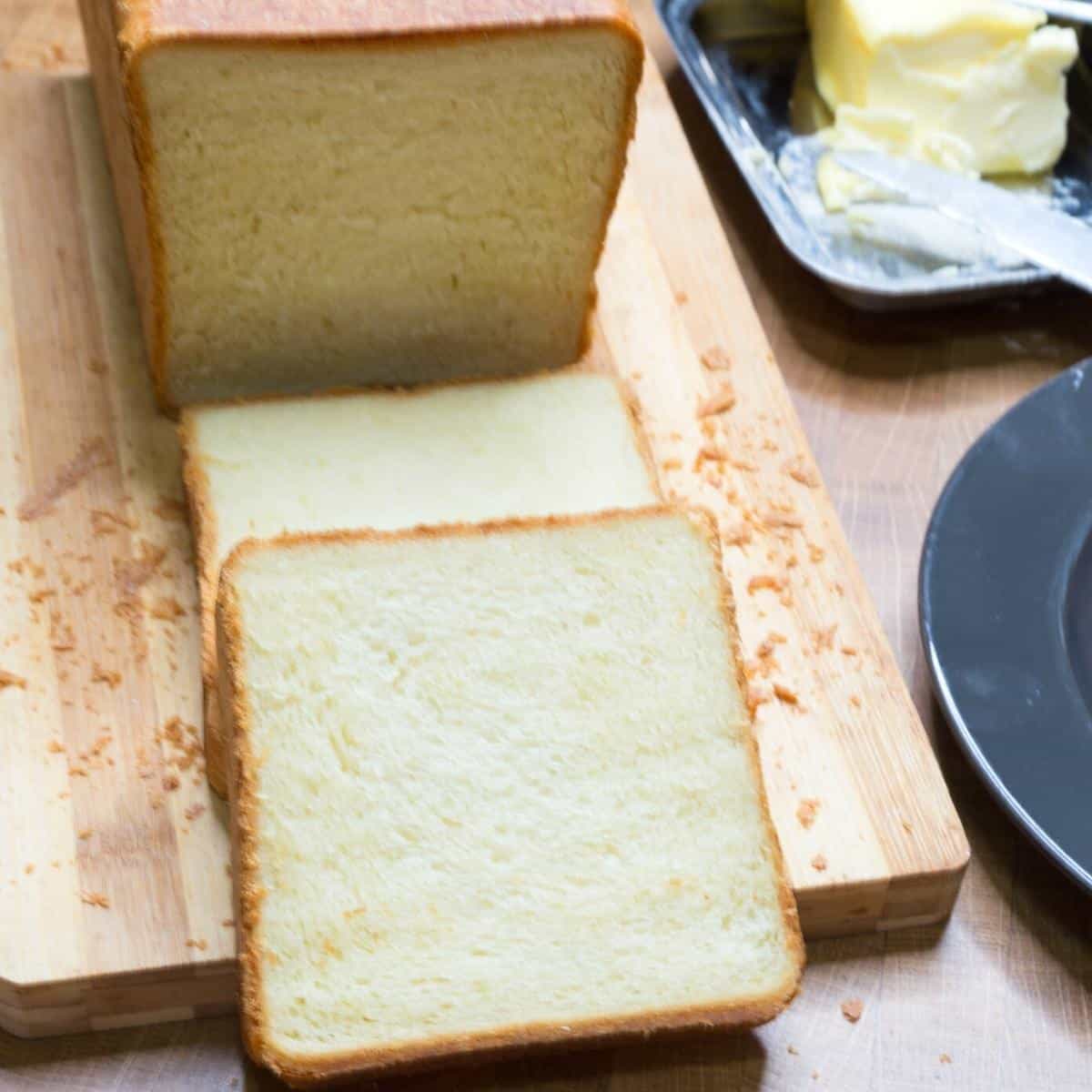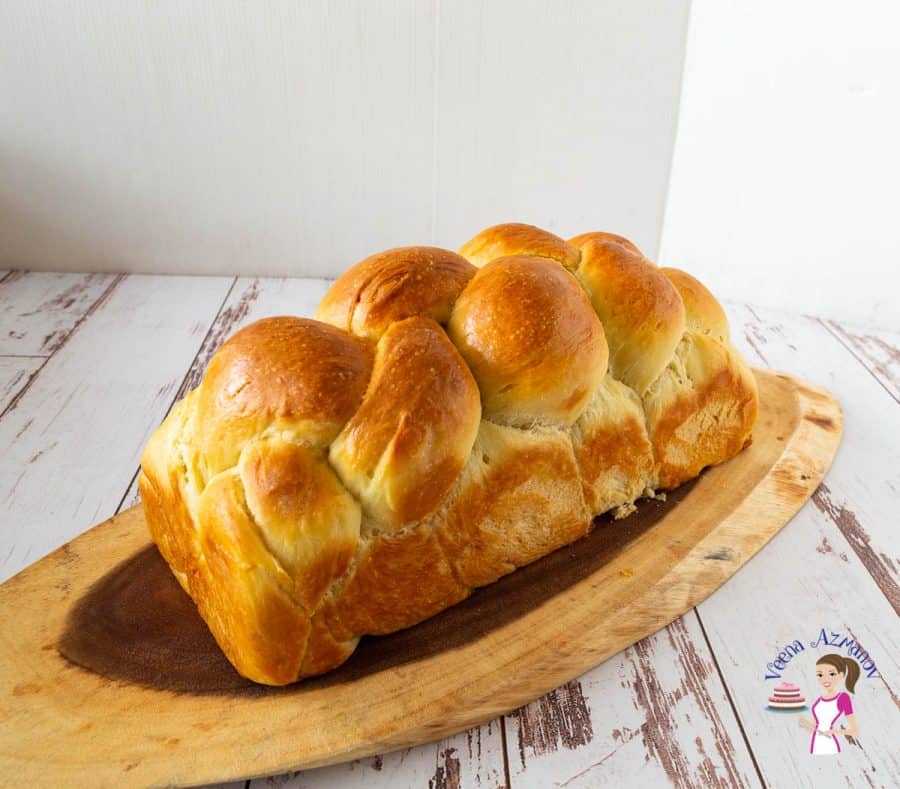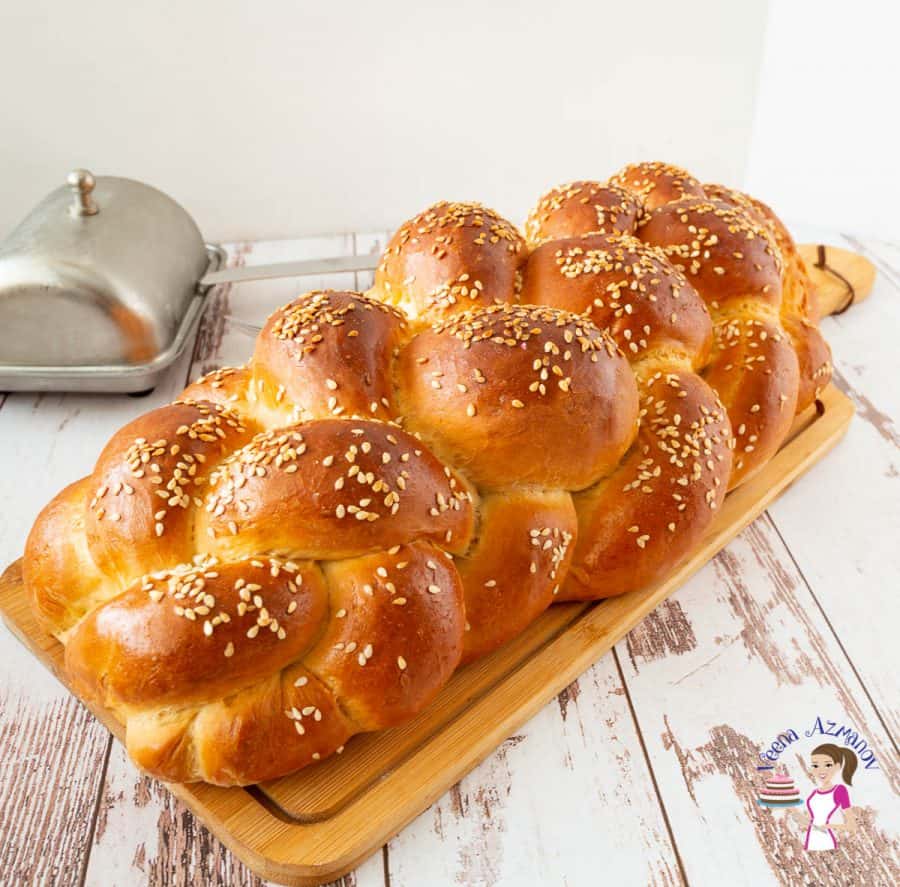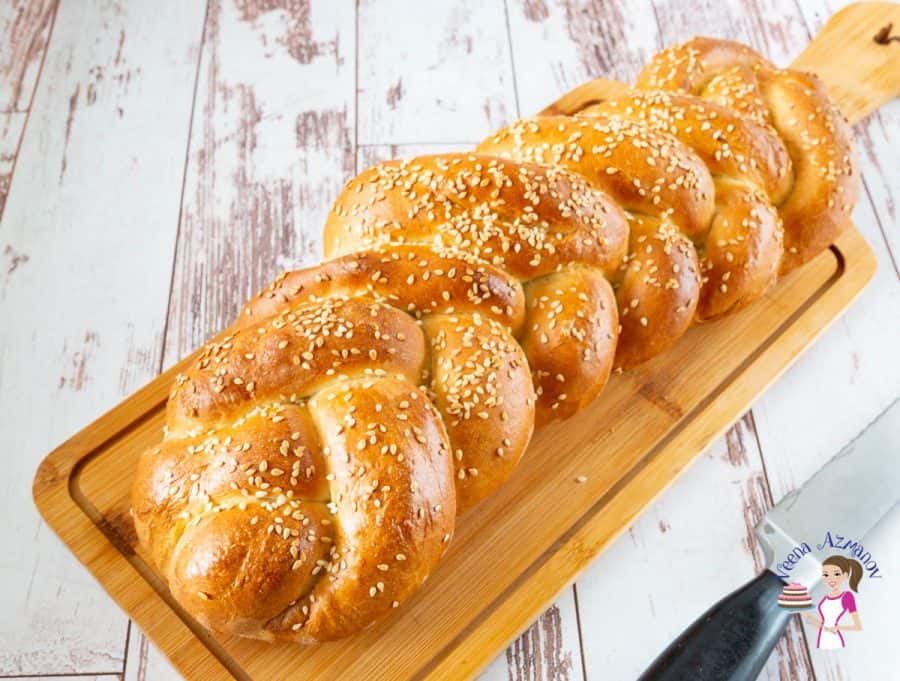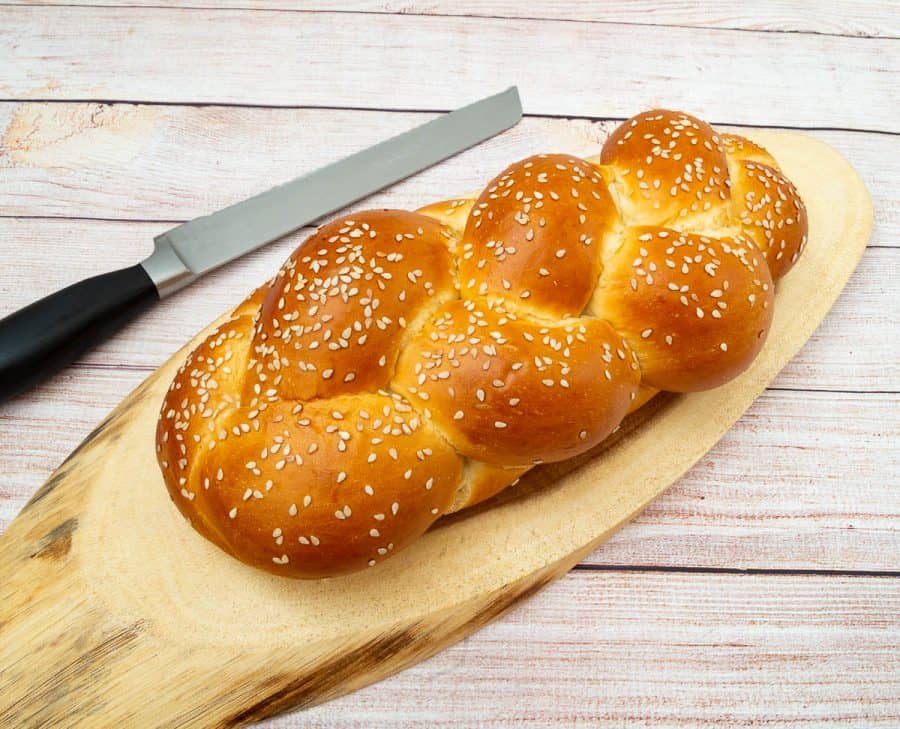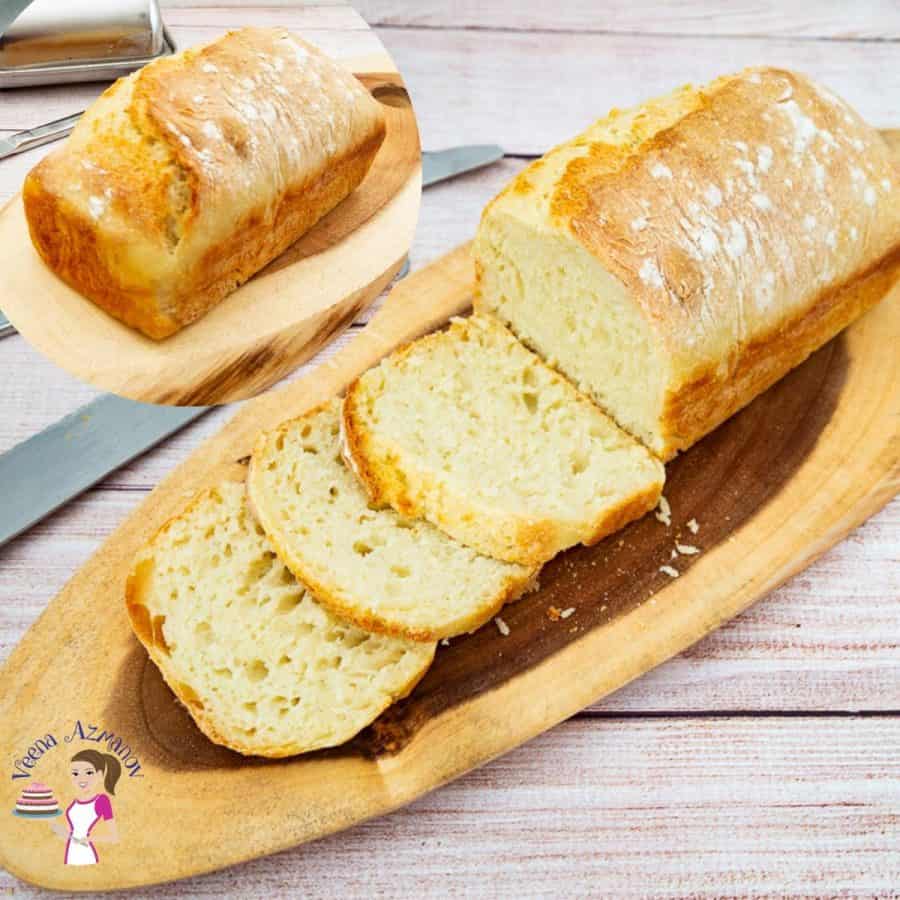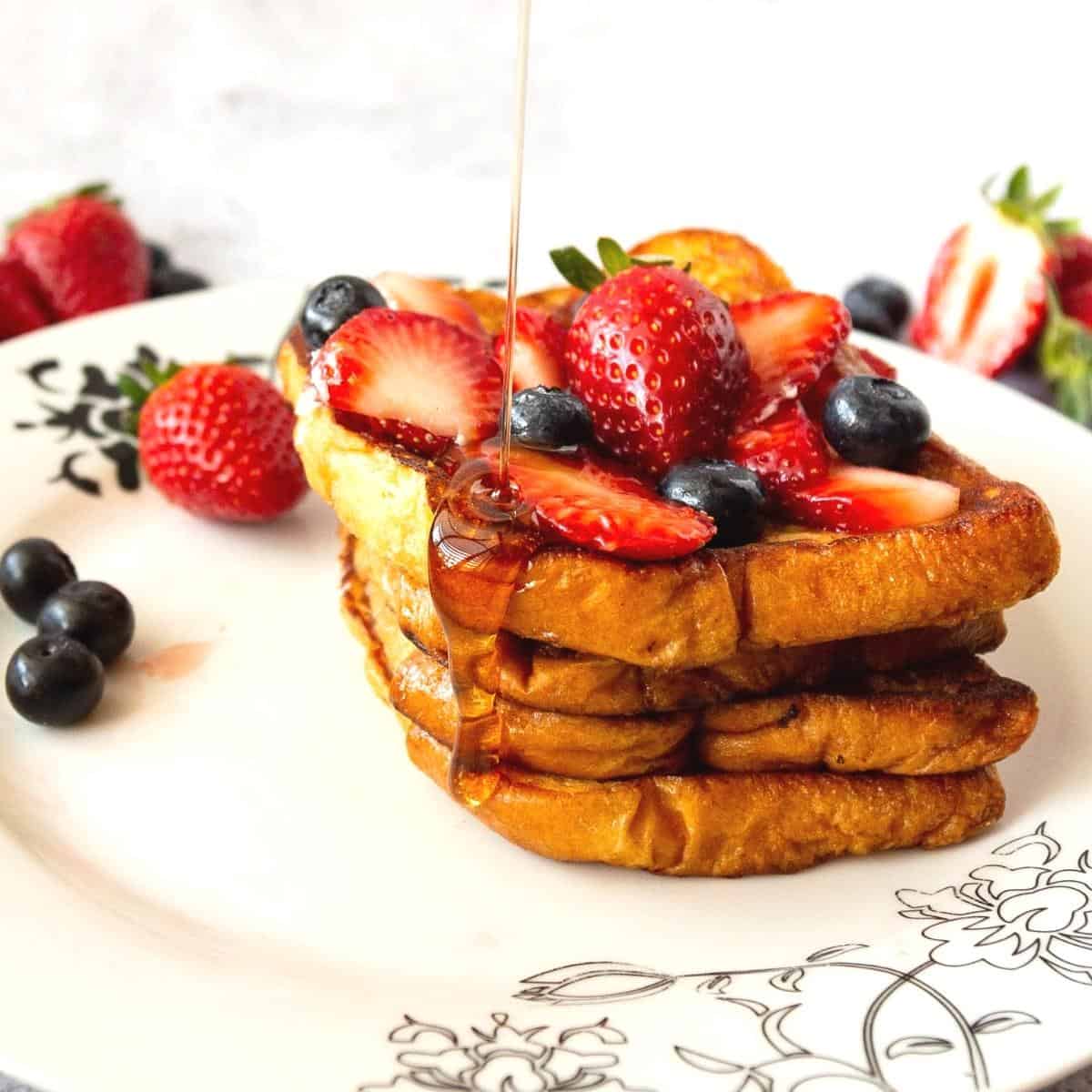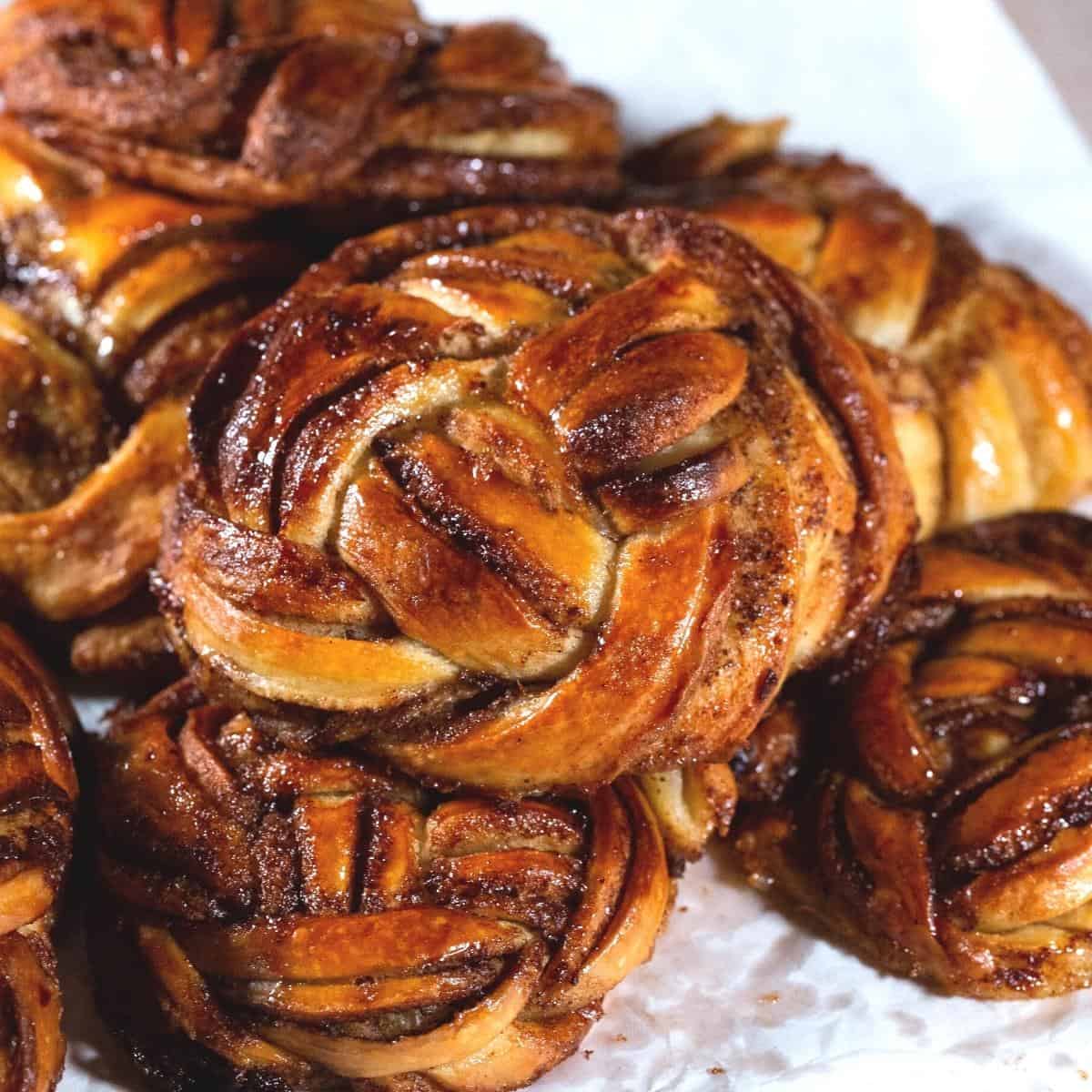People often think brioche pastry or viennoiserie is hard to make, but on the contrary, it’s rather simple and easy. I always knew soft Brioche buns or classic brioche or brioche a tete, and yet never realized I could make it into a sandwich bread until one day when I had lunch at a deli in Lourdes (south of France). The bread they used was a brioche pain de mie. It blew my mind. Wow! All bread made in a loaf pan can be used to make sandwiches, and yet to be characterized as a Pullman sandwich bread, you must have four square corners. Yup!! That’s the defining characteristic of this bread. That shape comes from using a specific loaf pan that has a nifty sliding lid. You actually bake the bread with the lid on. So when the bread rises as it bakes it fills the corners of the pan on all sides, giving it those perfect square corners. I’m not really sure how true this really is, but I read somewhere that the Pullman railway company invented this bread, back in the old days, to make storage and transport easy. With this shape, they could stack the bread one on top of the other using space more efficiently. The texture of the Pullman sandwich bread is supposed to be soft, light, and fluffy. So, you must have a good recipe that’s just right for the pan you have, so it will give you a perfect bread, not too dense nor too limp.
Step-by-step: Brioche Pullman Sandwich Bread
Dough
Yeast mixture – In the bowl of a stand mixer with the dough hook attachment on medium speed, combine the warm milk, yeast, sugar, and eggs.Pro tip – while most doughs can be kneaded by hand, a brioche is rich in butter so, it is best to use a stand mixer for kneading. Dry ingredients – Combine salt with the flour, then add it to the mixer as well. Knead on medium speed for about a minute scraping the sides of the bowl.Pro tip – Always make sure the salt is well incorporated in the flour before you add it to the yeast because salt slows the yeast process.
Knead – Once all the flour is incorporated. Knead the dough for 8 to 10 minutes until smooth. The dough will be soft and sticky but quite elastic. Butter – Next, add the soft room-temperature butter one cube at a time. Once all the butter is in, knead again for 10 to 12 minutes until smooth and elastic, and soft.Pro tip – this is a very soft and loose dough, so, resist the temptation to add more flour. Proof – Remove the dough from the mixer bowl onto a lightly floured surface. Shape into a smooth ball. Place in an oiled bowl and cover with plastic wrap or a damp kitchen cloth. Leave to rise in a warm place for about an hour. Then transfer to the refrigerator and let ferment for 6 to 8 hours or until doubles in size.Pro tip – the slow cold process of fermentation helps this highly enriched dough a makes it more flavorful.
Shape and proof
Punch – Invert the dough onto a lightly floured work surface. Punch down and shape it into a ball again. Shape – Start to roll like a jelly roll. Fold from top to center, fold the sides in and then roll again once more towards the end. Pinch the seams together.Pro tip – At this point, the dough will be cold and firm because it’s a butter-rich dough. This makes it easier to work. Proof – Place into a buttered Pullman loaf pan seam side down. Cover the loaf pan with plastic wrap. Let rise in a warm place. This can take about 90 minutes up to 2 hoursPro tip – because we started with chilled dough it may take up to 4 hours to become double in size. You can also leave it in the fridge overnight. Lid – Once you see your dough is almost halfway up the sides – spray the cover of the Pullman pan lid and place it on.Pro tip – you want to place the lid on before it rises to the top so you don’t ruin the rise.
Bake
Preheat the oven to 380°F / 190°C / Gas Mark 5 for at least 20 minutes. Bake – Place the pan on a baking tray and transfer to the oven. Bake the 13-inch loaf for about 45 to 50 minutes, the 9-inch loaf for about 25 to 30 minutes, and the 7-inch loaf for about 20 to 25 minutes. Pro tip – The bread is done – when you tap the bottom of your loaf and you will hear a hollow sound (or the internal temperature registers between 160° to 180°F on an instant-read thermometer. Cool – Partially open the lid and let it cool for 10 minutes – before you invert it onto a cooling rack. Cover it with a clean kitchen towel for 5 minutes to keep soft.Pro tip – Wrapping the bread in a kitchen cloth will let the steam cool in the bread keeping it soft. Note – Always let bread rest for at least an hour before you cut it – this is the hardest part!! But, it will prevent the steam from escaping and making the bread dry. Enjoy!
Frequently asked questions
Pullman Sandwich Bread – Pain De Mie White Sandwich Bread Whole Wheat Sandwich Bread No-Knead Sandwich Bread
Thank you for sharing - Save for later
Butter temperature: The temperature of the butter when incorporating it into the dough is crucial. If the butter is too soft or melted, it can result in an overly oily dough. Ensure that your butter is softened to room temperature but still cool to the touch. Softened butter should be pliable but not liquid or greasy. Butter incorporation: When adding the butter to the dough, it’s important to incorporate it gradually and evenly. If the butter is not mixed in properly, it can create pockets of oiliness within the dough. Be sure to add the butter in small pieces while the mixer is running on low speed, allowing it to mix thoroughly into the dough. Overworking the dough: Overworking the dough can cause the butter to separate and create an oily texture. Brioche dough requires gentle handling. Avoid excessive kneading or mixing, as this can lead to overdeveloped gluten and a greasy result. Mix the dough just until it comes together and then allow it to rest and rise properly. High-fat content: Brioche is naturally a rich and buttery bread due to its high-fat content. However, if you find that your dough is consistently too oily, you can reduce the amount of butter slightly in the recipe. Experiment with adjusting the ratio of butter to flour to achieve a balance that works for you. Room temperature and proofing time: The temperature of the room where the dough is proofing can also impact its texture. If the room is too warm, the butter in the dough may melt and result in an oily consistency. Ensure that the dough is proofed in a moderately warm environment (around 75°F or 24°C) to allow proper rising without excessive melting of the butter.
